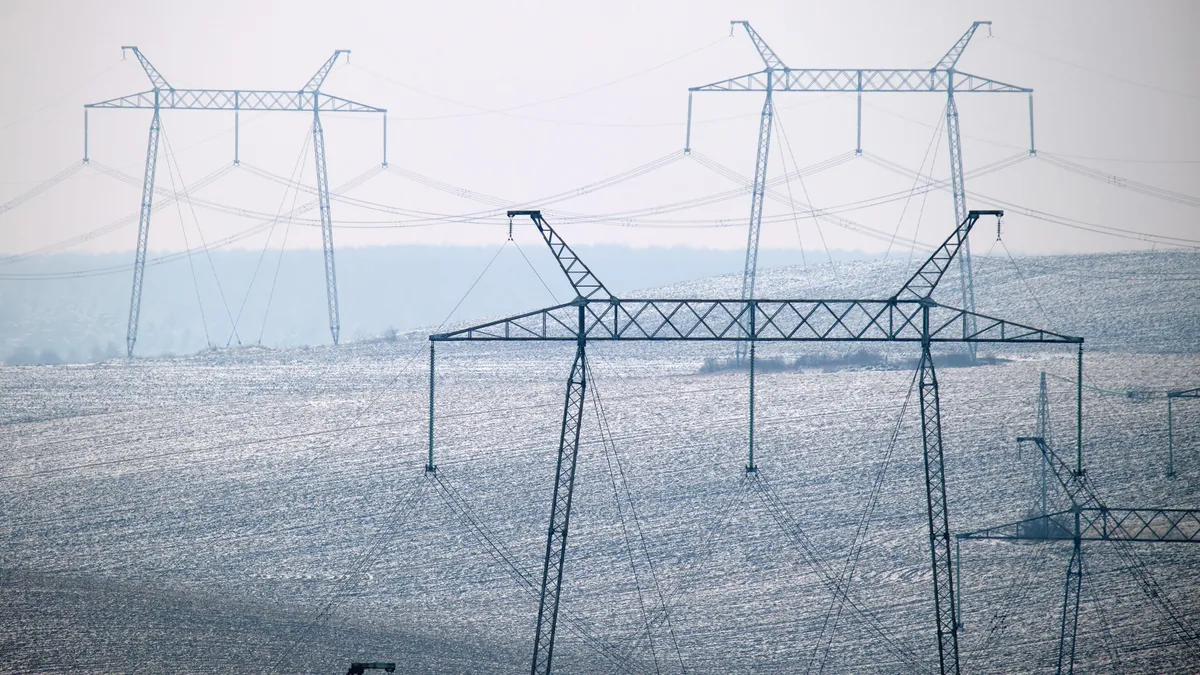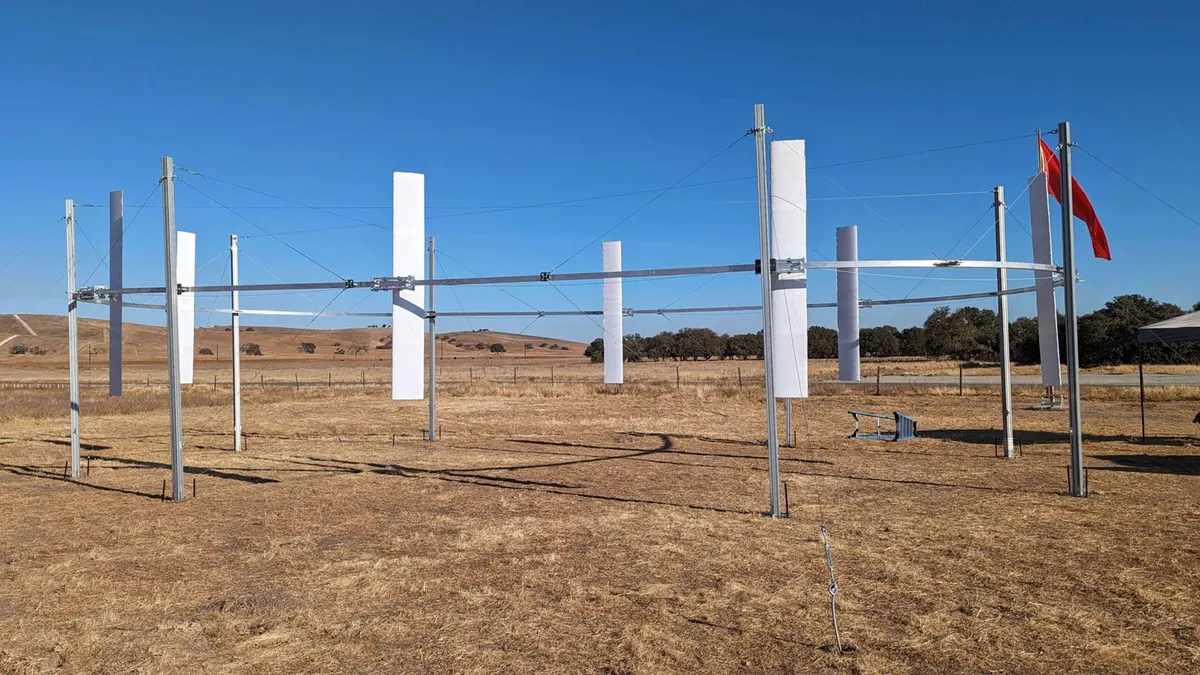California will lead by example once its time-of-use (TOU) rates go into effect, but it remains unclear whether the rates are workable for a larger population of residential electricity customers.
Power systems are evolving rapidly to change the standard flat per-kWh rates residential customers had long paid for electricity. The state's utilities have been piloting TOU rates to meet increased costs to provide power, caused by load reduction from the surge in energy efficiency and customer-owned generation, like rooftop solar.
By 2020, California's three major investor-owned utilities (IOUs) will begin rolling out the first U.S. system-wide default TOU rates to their 22.5 million residential customers. But some say TOU rates should be a lot simpler than those being proposed by California's IOUs and that they are not doing enough to educate customers.
Policymakers "are trying to give customers better price signals to get them to move their electricity consumption away from the peak demand periods," Sara Baldwin Auck, Interstate Renewable Energy Council (IREC) regulatory program director, told Utility Dive.
"TOU rates are the new 'multi-tool,' to cut utility costs, reduce emissions, manage loads and adapt to new distributed technologies."

Gwen Farnsworth
Senior energy policy advisor, Western Resource Advocates
"Peak period demand drives the majority of system investments and can cause system overloads," Baldwin Auck added. "If customers respond to the price signals, utilities can avoid building and running expensive natural gas peaker plants that add to system costs and to greenhouse gas emissions. That is California's primary motivation."
The uses of TOU rates
Utilities and regulators are increasingly considering TOU rates to shift load and manage the impacts of distributed energy resources (DER). Where overgeneration of renewables is creating challenges for grid operators, TOU rates may give DER owners a reason to use battery energy storage or load control technologies to shift their electricity usage away from peak demand periods.
"TOU rates are the new 'multi-tool,' to cut utility costs, reduce emissions, manage loads and adapt to new distributed technologies," Gwen Farnsworth, Western Resource Advocates senior energy policy advisor, told Utility Dive. The key is they charge customers "fairly" for when they use energy, she added.
Each California IOU's rate design will apply lessons learned in their own and other utilities' pilots and voluntary trials of customer responsiveness to the many variables that can allow time-varying rates to effectively align customer behavior and system costs.
TOU rates to date
The first major focus on TOU rates, the simplest kind of dynamic time varying rate, came out of the 2000-2001 California energy crisis, according to Brattle Group principal Ahmad Faruqui.
"California leaders wanted to connect the retail and wholesale markets through dynamic pricing and TOU rates were seen as the bridge," he told Utility Dive. "But they realized it would not be practical without smart meters."
As California worked on an advanced metering infrastructure (AMI) rollout, voluntary TOU rate trials expanded across the country. They have rarely proven popular.
"[T]he Arizona summer air-conditioning load shape proved to be well suited for TOU price signals."

Leland Snook
Rates and Rate Strategy Director
Optional TOU rates are offered by 48% of U.S. IOUs and 14% of all U.S. utilities, according to a November 2017 survey from the Brattle Group. They are used by 2.2 million residential customers, which means only 3.4% of electric utility customers have a TOU rate option.
One exception is the Arizona Public Service (APS) voluntary TOU rate plans, which have enrolled 56% of the utility's 1.1 million residential customers. Various versions of the rates have been offered "since the early 1980s," according to Leland Snook, director of Rates and Rate Strategy.
The key to APS's success is that "the Arizona summer air-conditioning load shape proved to be well suited for TOU price signals," Snook told Utility Dive via email, adding the utility also provides "a robust online rate comparison tool" that allows customers to see their potential savings.
A major breakthrough with "default" TOU rates, which require a customer to "opt out," was the Canadian province of Ontario's 2011-2012 default TOU rate, Brattle's Faruqui said. It produced a 2.5% to 3% peak demand reduction from 4 million customers despite being conservatively designed, he reported.
Smart meters are now available in "about half the country" and will be "just about everywhere in another ten years," Faruqui said.
Initially, there was a concern that residential customers would rebel against TOU rates, especially low and moderate income (LMI) customers, fixed income customers and those with medical disabilities, so regulators and policymakers moved slowly, Faruqui said.
To get the best responses, utilities must be sure consumers understand the rate, have smart technologies to manage it and are able to opt out, Baldwin Auck said. "Otherwise, it would be like asking your grandmother to program a new phone app."
However, a survey following an early Sacramento Municipal Utility District TOU rate pilot shows customers are now ready for TOU rates, Jim Lazar, Regulatory Assistance Project senior advisor, said. Over 70% of customers on default TOU rates reduced usage of laundry and lighting during the 4 p.m. to 7 p.m. high-priced peak period. Almost 60% ran dishwashers during off-peak hours and 45% turned off their air conditioners.
Shadow billing, which shows the customer what the TOU rate would be ahead of its implementation, is a good way to help educate customers, Baldwin Auck said.
A customer protection plan is a better strategy than shadow billing, said Navigant Director Lon Huber, who designed the Xcel Energy default pilot, which will be available to 10,000 customers in Minnesota beginning in the early 2020s. "It guarantees customers they will be billed at the displaced flat rate during the first year or two of the transition if they are dissatisfied with the TOU rate."
Getting the design right
Three major factors influence the effectiveness of a residential TOU rate, the experts agreed: the ratio of the peak price to the off-peak price, the length and time of the peak period window and the number of pricing periods offered to consumers.
Of the TOU rates now in place, which have generally been unsuccessful in attracting participants, 74% have only two pricing periods, Brattle found.
In cases where a utility offers two pricing periods, the median difference between the prices is $0.10/kWh. However, for the utilities that offer a third "super off-peak" price, the median difference between the highest and lowest prices was $0.12/kWh, Brattle reported.
"Customers are more likely to respond if the peak period is narrower," Faruqui said. Market research shows peak periods of five hours or less are more likely to attract customers and drive peak demand reductions, though "the optimal window size depends on the shape of the system load curve," he added.
"If the TOU rate is well designed, and simple to understand, people will figure it out and respond, but it takes time."

Jim Lazar
Regulatory Assistance Project Senior Advisor
Over 71% of current TOU offerings have a price ratio of at least 2‐to‐1, which means the price of electricity during the peak is twice as high as the off-peak price.
A Brattle study of 300 TOU pilots around the world showed a clear correlation between the peak price to off-peak price ratio and peak demand reduction, Faruqui said. A 2 to 1 ratio produces a 4% to 5% peak demand reduction and a 5 to 1 ratio has produced a 13% reduction.
The key is aligning prices with system costs, Navigant's Huber said. For the Xcel Minnesota TOU pilot, he used detailed system analytics to align off-peak prices with windows where system prices are low and to align on-peak prices with "the hours that drive capacity-related costs," he said.
Rates should also be designed "based on expected future conditions, not today's conditions," RAP's Lazar said. "Major solar additions will have excess midday generation, which creates a different future cost character than major wind additions that produce excess overnight generation."
"If the TOU rate is well designed, and simple to understand, people will figure it out and respond, but it takes time," Lazar said. "There will be results in year one, more complete customer response over about seven years, and some responses, like customers buying new heating and cooling systems with smart thermostats, may take 20 years."
TOU and solar-plus-storage
Historically, TOU rates were intended to reduce peak demand and the high costs to utilities of meeting it, Brattle reported. More recently, advocates for DER, and especially battery energy storage, have supported a low midday price and a later evening peak price as a solution for midday solar over-generation.
Such rates could also optimize the use of DER for grid services and limit investments in natural gas infrastructure that could become stranded as renewables prices fall, according to 2017 Lawrence Berkeley National Laboratory research.
"Because of midday overgeneration, the solar-plus-storage industry accepts the TOU rate structure concept, but the transition to it should minimize disruption," Brad Heavner, California Solar and Storage Association policy director, told Utility Dive.
Ultimately, "the industry wants dynamic pricing and hourly rates so that solar-plus-storage owners can respond in real time to the real needs of the grid," he added.
Will it work for California?
Southern California Edison (SCE), Pacific Gas and Electric (PG&E) and San Diego Gas and Electric (SDG&E) are moving steadily toward the roll out of default TOU rates, according to Heavner. Pilots approved by the California Public Utilities Commission (CPUC) are in place and preparations are underway, with some delays, for full-scale implementation.
SDG&E says it will begin rolling out the rates in 2019, while PG&E and SCE were granted a postponed implementation until the early 2020s by the CPUC, "to further upgrade their IT systems, incorporate lessons learned from ongoing pilots and conduct more marketing, education and outreach," Environmental Defense Fund economists Jaime Fine and Andy Bilich wrote in an article.
"If people respond, they will save money and the utility [will] save money. And with a simple, well-designed TOU rate, everybody responds sooner or later."

Jim Lazar
Regulatory Assistance Project Senior Advisor
Details are incomplete on the plans to be implemented by the IOUs, but stakeholders said they are not the simple designs proposed by RAP's Lazar.
"SDG&E and PG&E have moved to moderated TOU rates, but SCE's rate has differentials that are harsher," Heavner said. They need a more "transitional structure."
California has "a huge gap in customer education, outreach and awareness," IREC's Baldwin Auck said. "It is likely to go through a big learning curve because it has not been here before, with this large a customer population of this great a customer diversity."
RAP's Lazar is more optimistic. "Moving to default TOU in California may not be that big a change because most customers have a pretty normal distribution of usage and won't see a big difference in their bills if they do not respond," he said. "Off-peak power users will have lower bills and on-peak power users will have higher bills."
"If people respond, they will save money and the utility [will] save money," he added. "And with a simple, well-designed TOU rate, everybody responds sooner or later."




















